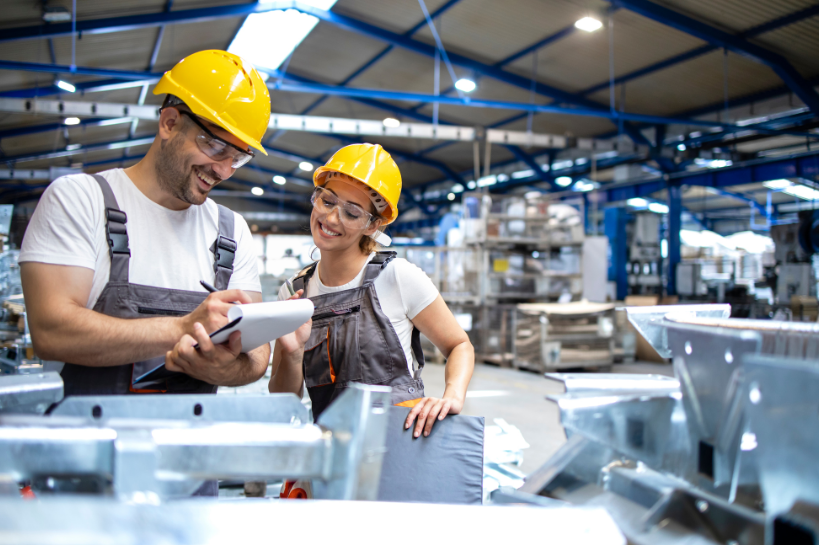The Changing Face of Worker Safety, Health, and Well-Being in a Post-Pandemic Future

It’s not a surprise: the COVID-19 pandemic has changed worker health and safety in permanent ways. From the rise of remote work and manufacturing automation to the effects of burnout and unsafe working environments, we experience work differently. For workers who can do their jobs remotely, they’ve still been able to maintain a modicum of security during the pandemic. For others—those who have to work in person, those undertaking arduous physical labor, those who don’t have a safe workplace—it has increased the precarity of their work life.
If there’s one positive, though, the pandemic has “brought well-being to the forefront of the conversation,” says Jack Dennerlein, PhD, adjunct professor of ergonomics and safety in the Department of Environmental Health and co-director of the former Work Health and Well-being: Achieving Worker Health program at the Harvard T.H. Chan School of Public Health. “Now all of a sudden people realize the impact work has on mental health and other aspects of well-being, through impacts like reliance on childcare and disparities in work. The conversation has changed.”
Thinking ahead to the future of work, both now with the threat of potential new variants and in the future post-COVID, the response in both the public and private sectors will need to be more robust, according to a recent The Lancet article titled “Work and Worker Health in the Post-Pandemic World: A Public Health Perspective,” authored by Dennerlein and other experts in the field.
“Some of the support systems that we had were blown up during the pandemic,” explains Dennerlein. “When you think about 40 percent of the workforce working remotely in the future, it’s going to have deep impacts on communities, cities, real estate prices, urban planning, and transportation.” Like it or not, the future of worker health and safety will mean a broader, more strategic approach.
Understanding Worker Health and Safety in 2022
Rapidly changing working conditions, accelerated by the pandemic, will have significant—and not yet fully known—impacts on workers. The first, and most obvious, is worker stress and burnout. The millions of workers who have left their jobs (a.k.a. The Great Resignation or The Great Reshuffle) speak to the long-term exhaustion workers face, particularly in health care but extending to the vast majority of industries.
Technology is another aspect, with AI, machine learning, holographic imaging, and the Internet of Things bringing the potential for rapid workplace innovation—but also job obsolescence and the need for new skill sets. “It’s already impacting people,” says Nicolaas Pronk, adjunct professor of social and behavioral sciences, president of the HealthPartners Institute, chief science officer at HealthPartners, Inc., and former co-director of Work Health and Well-being: Achieving Worker Health. “If you look at Uber, for example, these platforms use AI to decide which driver gets what ride, deciphering workloads and things like that. We have no clue how that impacts worker well-being.”
Another important aspect is the prevalence of working from home, which some organizations have embraced—or at least accepted a hybrid work model. However, this can also lead to worker isolation and sedentariness.
“Based on our experience with COVID-19, we know that physical inactivity is a huge factor in severe outcomes, hospitalizations, and death,” says Pronk. “So is obesity. These challenges, which were tough enough before, still need to be addressed. We can start talking about work arrangements, the redesign of work, the workplace, and the workforce. But let’s not forget the foundational stuff, too.”
Taking a Holistic View of Work and Worker Health
During the pandemic, the overall response has been patchwork, with some local governments, businesses, educational programs, public health experts, and health care systems responding faster and more effectively than others. Now, in a time of uncertainty, that response has been even more varied—with debate over vaccine mandates, organizations differing over whether and how in-person interaction should take place, and rapidly changing regulations. This has often increased workers’ stress levels.
Referencing the Biden presidential administration’s Build Back Better initiative, Dennerlein notes that there’s now a stronger understanding of the interconnectedness between systems, particularly how they should work together to provide more effective support. In essence, he says, “what are all the support systems that we’ve built into our economy, communities, and governments that help a single business have a healthy workforce and a healthy business in and of itself? And how can we do that more at a systems level? How do we make sure that vital conditions for thriving communities are addressed?”
Partnering across sectors is essential for post-pandemic worker health and safety, explains Pronk. And he’s not simply referring to the immediate needs brought on by the pandemic, but other changes necessitating fast and decisive action.
“We need to start thinking about the future to address disruptions—they can’t be fixed by one sector itself. It’s a collective, and we’re going to need to work as a collective. This includes non-pandemic issues like climate change: respecting biodiversity, preventing habitat destruction. It literally has an impact on our workforce. We need to think about infrastructure, capacity, and structural changes.”
What are all the support systems that we’ve built into our economy, communities, and governments that help a single business have a healthy workforce and a healthy business in and of itself?
How to Begin Improving Worker Health and Safety Within an Organization
For those with leadership positions, in health care or otherwise, this cross-sector collaboration is an important aspect of worker health and safety—and something that is covered in Work Health and Well-being: Achieving Worker Health. But even before that, it means looking at the workplace from within one’s own organization. Critically, this is not the same thing as telling workers to do better or otherwise putting the onus on them to improve.
“You need to start addressing the conditions of work, the environment in which people work,” says Dennerlein. “And, in doing that, the business itself will actually create resiliency.” The course, he says, addresses this notion of organizational resiliency—how that system responds to rapid changes and passes that capacity to adapt, grow, and evolve onto its workers. Focusing on initiatives that create societal benefit while working to generate economic value is challenging but critical.
“In terms of the Total Worker Health® approach within a company, this could mean: what happens when a new technology comes along? How do you integrate it with your workers? You’ve got a new pandemic and new regulations: how do you make sure that you’re engaging the workers and workforce to positively impact them? How do you need to adapt and be resilient so that you can stay productive and continue working?” adds Dennerlein.
“We want people to thrive in work.”


